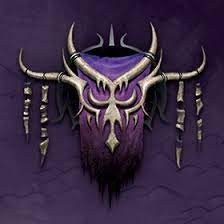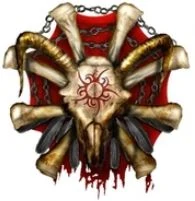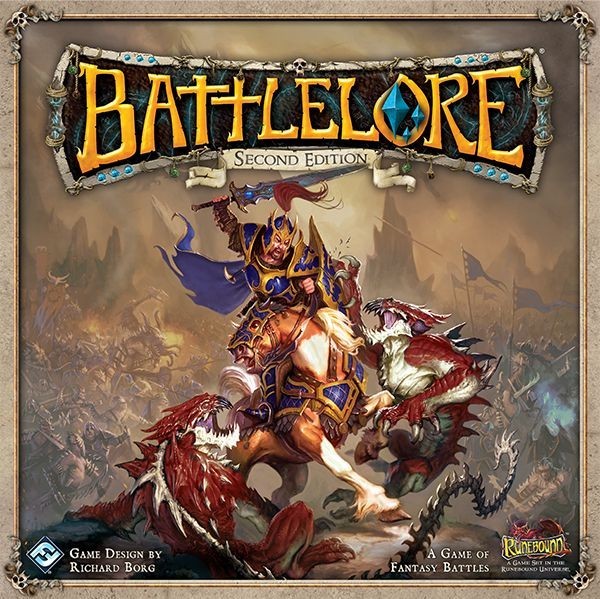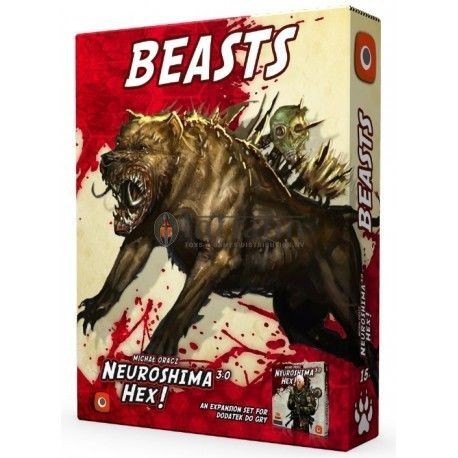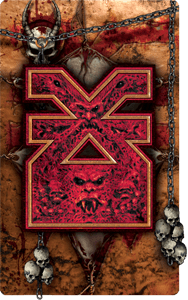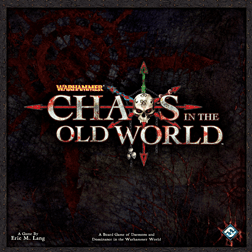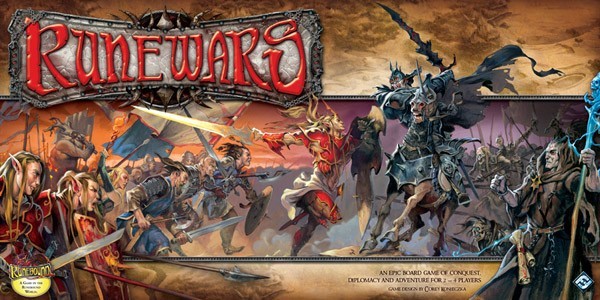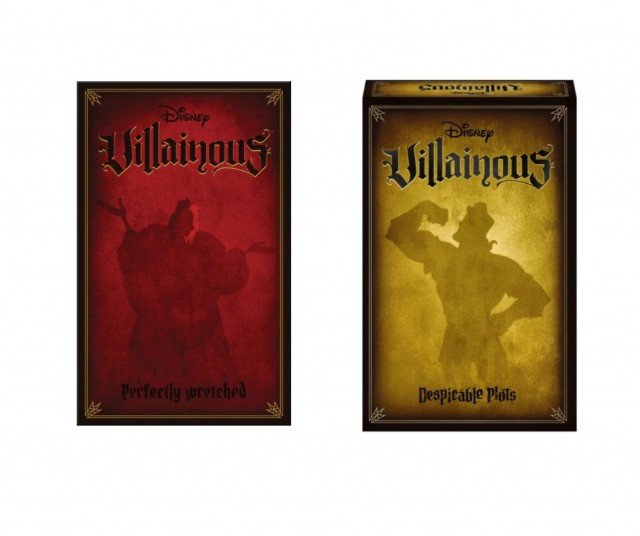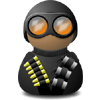An underappreciated DoaM game that is still well known by designers and aficionados.
I was surprised again (as with Abyss) to discover that no one had written anything on TWBG about Cry Havoc in the five years since its release. While not the most notable item from Portal Games' catalog (Imperial Settlers, Neuroshima Hex, etc.), it's a game of high repute among those who've had a chance to play it. That, of course, may be the determining factor, since there are ~5000 new games published every year and the genre of Cry Havoc (area control/DoaM) is particularly crowded. But despite the relatively standard science fiction theming, it's the mechanical aspects of the design that really make it memorable for many players. From a combat system that requires tactical resources in the battle itself, as well as where and when to engage, to a map that actually supports the concept of three-dimensional thinking, to the utterly disparate factions who can all successfully pursue their unique methods of development and destruction, Cry Havoc brings a lot to the table that other designers have cited for being inspirational in their own work.

The name that inspired me on the box was Michal Oracz; famed creator of the aforementioned Neuroshima Hex and other Portal classics like Theseus. But the lead designer (and, indeed, the current rights holder, now that the contract with Portal has expired) is Grant Rodiek; lately noted for his work on Leder Games' Fort. Grant has mentioned that the original theme for Cry Havoc was the French Revolution of 1789, with what are currently the Machines, Pilgrims, Humans, and Trogs being the various factions of that struggle (the Bourbons, the Dantonists, the Jacobins, etc.) As a poli sci major and former political activist, I'd have been just as thrilled playing a game in that sphere, but Portal decided to go with the more "standard" route. In that respect, they didn't stray far from Games Workshop's 40K milieu, with Cry Havoc's factions being easy comparisons with Necrons (or Portal's Moloch), Eldar, Space Marines, and Orks, both thematically and mechanically. (I'm still trying to figure out who the Dantonists might have been...) It's enough to be considered almost bog standard, but that may be because what really makes the game shine isn't the pretty pictures and the average story, but the way in which those are carried along by the innovative ideas present in its play. And, to its credit, it was something of a departure from the standard themes to find that the native inhabitants of the planet (the Trogs) that the other three factions are attempting to 3X (exploit) are at least as capable of the fourth X (exterminate) as any of the others.
So how does Cry Havoc differ from many standard DoaMs? Well, first, it's a game that actually encourages combat. It does this via two methods: 1. It plays very quickly. There are only five rounds to the game, so there's a lot of action in a compressed amount of time. If you want to get ahead of (or keep up with) your opponents, you have to move quickly. 2. Every time there's a fight, the territory that you're fighting over gains more crystals and, thus, gets more valuable than it was before the fight started. It's kind of like dangling candy in front of a toddler, but there it is. You really can't "turtle up" in this game if you want to have any chance of winning. And, honestly, even if you try, the more aggressive factions are probably going to roll in and wreck your Maginot Line, anyway. This potentially makes it tough going for the two slower-starting factions (Machines and Pilgrims), but they're as well-served by an aggressive start as the Humans and Trogs are (especially given the combat prowess and recovery capability of the Machines and the evasiveness and harvesting power of the Pilgrims), so in some ways it's a matter of what risks you're willing to take with those (or any) factions from the very outset. Of course, the standard five rounds was an adjustment introduced by the Aftermath expansion, so if you've been one of those players trying to figure out how to catch the Humans after they drastically shorten the game in the first round, be aware that I'm writing all of this from the perspective of that needed tweak to the rules. You don't, however, need the expansion to implement that. Just play five rounds instead of depending on VP scoring to determine when to activate Events. It eliminates the secondary function of the nice VP track on the board but, to quote some revolutionaries from somewhere: "C'est la vie." It seems like an awful constraint, given that each round is only comprised of three actions per player, but the amount of game packed into those 6-12 actions per round makes it more than sufficient to create tough and interesting choices for everyone involved.
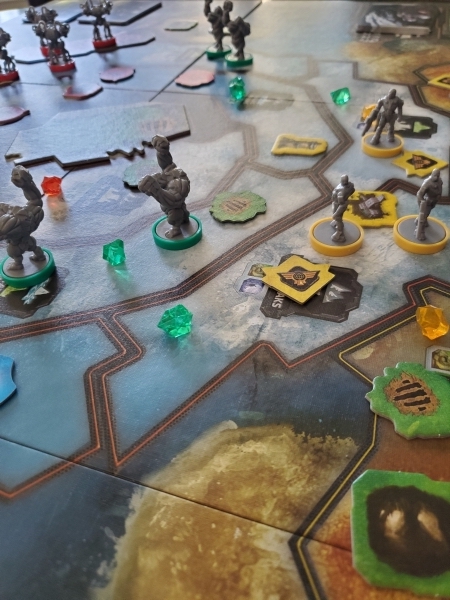
Another variation is that Initiative, or turn order, isn't dependent on game success. Owning the most territories or having the most of a particular resource doesn't mean that you get to go first. It's solely dependent on card play. The Humans have a distinct advantage in going first, since the play of their Watchtowers and Artillery can be best exploited by having a timing advantage. In contrast, the Machines often want to go later in the turn order once they have a Bunker or two set up. Trogs also tend to want to go later to exploit the versatility created by the free recruitment granted from Trog Nests and War Parties. But if you're willing to play one of the weaker cards in your deck, you can pick any spot in the turn order that you like for the following round. Cry Havoc has a considerable amount of pre-planning involved (making it subject to a fair amount of analysis paralysis in my experience.) Understanding when you're acting in the following round can be a huge boon to bringing those plans to fruition or creating new ones that you might've just stumbled across. That stumble often involves the 3-D aspect to the board. As we're talking about a planet-wide fight here, if you go off one edge of the board, you come back on the other side(!) so the mobility of the various factions could be greater than first anticipated, especially in the case of the Trogs. (You'd be surprised how many SF games actually don't implement that whole "fighting on a sphere" thing.)
But the heart and soul of the game's innovations center around the combat system. I feel fairly safe in suggesting that there was really nothing like it up to that point in time, although there have been several derivations or independent developments similar to it that have appeared since. It's a bidding system for combat, which isn't hugely unusual (Rising Sun is a good example of a game developed afterwards that has a similar approach, including the hostage-taking result) but you're bidding with almost perfect information because you're using the actual warriors involved in the combat as the currency. There are also several levels to consider when bidding. Combat is resolved top-to-bottom: Region Control, Capture Prisoners, and Attrition (killing stuff.) So, if you win the region, you've won and your opponent has to retreat. But if they do enough damage in Attrition, they could leave you with an empty region that they can simply walk into next round and take away from you, especially if they're higher in Initiative. This is a frequent answer for those who ask how the Machines can deal with a Human player's fast start. But taking prisoners can be just as important. You get 2 VP for winning the region. But if your opponent takes a prisoner, they're getting 1 VP automatically every round thereafter until or unless you pay 2 VP to get your dude back. And beyond the points consideration, with only 12 dudes to play (except the Trogs, who have 16), it can be a significant cost to have too many of your guys cooling their heels in front of your opponents, rather than out laying waste to the board.
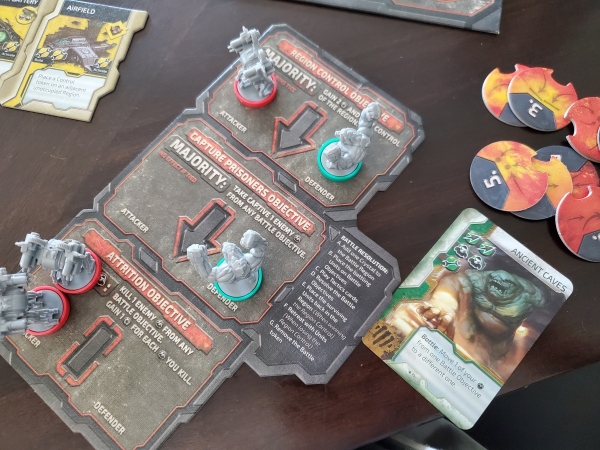
The exception to that almost perfect information is, of course, the card play. In the faction decks, the key card is Drop Troopers/Deploy Holos/Pneumatic Tube/Ancient Caves, which lets you move one dude from one objective to another on the battle board. But the real power comes from the Terrain cards, which can let you move multiple guys from one objective to another, bring in guys from your reserve, bring in guys from adjacent regions, or even swap guys with your opponent in the battle. Or, even more disruptive, Shifted Priorities, which lets you resolve the objectives in reverse order (so Attrition first.) These cards are always played after dudes are deployed to the objectives, so if you're expecting to win the region, even though your Machine opponent has gone heavy into Attrition, you may see your guys disintegrating before they can win anything. And let's not forget that you earn points for killin' your opponent's doodz, too (but not in their base.) The restraint on the card play is, of course, that they're a finite resource that are used for almost all of the other actions you can take (except gaining more cards) before combat even occurs. You'll usually only have four of them in your hand, so there are hard choices to make about what to spend to move, build, or recruit and what to save for those showdowns. All of this is the game within the game that often transforms how the overall game is played. Again, no surprise to discover that the combat system in a DoaM is important. But the tactics within that combat system can be so far-reaching in the five rounds that you play, it really can't be overstated how important this is. Cry Havoc can be seen as a 4X game (You even have Explore tokens!) But the weight is heavily on that last X. This is a wargame and it's one of the more interesting wars that you'll ever fight.
Of course, the factions all operate differently, as well. I don't use the term "asymmetric" here because, in the end, they're all trying to score and win in the same fashion: controlling regions, scoring crystals, and killing opponents. My definition of "asymmetric play" is a little more narrow than the way it's popularly used now, which often more closely resembles the "variable player powers" category on BGG. But each faction must be played in a different fashion, such that trying to play the Pilgrims like the Trogs will only bring you frustration. What makes those differences are the skills and structures available to each side that define how and what they are. Now, there's an argument to be made that being forced into the different roles of Machines or Humans puts the game "on rails"; in other words, you'll always play the Machines the same way. But, in my opinion, nothing could be further from the truth, since not only is each interaction/game wildly variable, but the different skills available (players pick 1-3 from a potential 10) will also push your faction in a direction that you might not have tried in the past.

Humans: As noted, the Humans are the fast starters in the game, not least because they can score every turn just by discarding a card with Occupation, even if no one plays Enable Scoring (which a lot of Human players will try to do, anyway.) Between Airfields and Scouting, there can be a lot of Human control markers scattered about even in the first round which works for scoring regardless of the presence of Trog Nests or War Parties. Interestingly, though, despite their ability to spread their presence via control markers, Humans often lack mobility. Plus, discarding a card to score every round will have an impact on the versatility of their hand, so having skills like Recon Forces and Veteran Forces can be quite useful in keeping one's options open. Seek and Destroy, like Artillery and Watchtower, is often just another way to hassle your opponents and tip the odds in a direction you want a battle to go, even if you're not involved. That's on top of the ability to have regions primed for your occasionally minimal forces to contest them with more numerous or durable opponents like the Trogs and the Machines. Because of that mobility issue, the Humans are often focused on the Oceans terrain deck, which is all movement cards, and specifically the Air Support cards within that deck, which can also be used to bring in a dude from your Reserve to a battle objective. Humans are the "easy" faction to play and I think they were intended that way. But they can run out of gas in the midgame, so they have to try to guard against becoming a non-factor, even if they have a significant VP lead in the early going.
Pilgrims: While turtling isn't an advisable or often even feasible strategy in Cry Havoc, the Pilgrims are the one faction that can trend in that direction, based on their available technology. Similarly to the Humans, the Pilgrims will always be able to score with Examination, but it will really pay off once they've been able to build their Pool. Activating Sow the Seeds can be huge, since it's a 1-for-4 payoff if you're able to hold the territories in question when scoring comes up. It's often really useful if you have Trogs close by, since they're not quite as tempted by crystal-heavy regions, since they only score for half the crystals in question. And, of course, Teleportation is one of the greatest movement tools in the game, while Data Extraction makes contesting regions with you a bit less enticing. Power Extraction can be useful, but I've found it to be a bit less than other battle-affecting skills. Tipping the balance on a crucial region can't entirely be overlooked, though. All of this, of course, requires priming the pump with Harvesters and priming them with Extractors. Power Orbs are often far more useful than Power Extraction in terms of creating advantage on the battle board, but remember that they can only do it from an adjacent region (i.e. if the enemy attacks the region with the Orb, it can't be used.) Pilgrims, more than any other faction (even the tech-heavy Machines), derive the most benefit from having all of their structures up and running, since it will often create a feedback loop that makes them tough to deal with. They're also the only faction that has a draw option in their base deck with Telepathic Link. They'll often be relying on a mix of terrain cards from Mountains and Oceans. Pilgrims can be tricky to play, at first, but once you get the hang of them, they can be quite menacing.
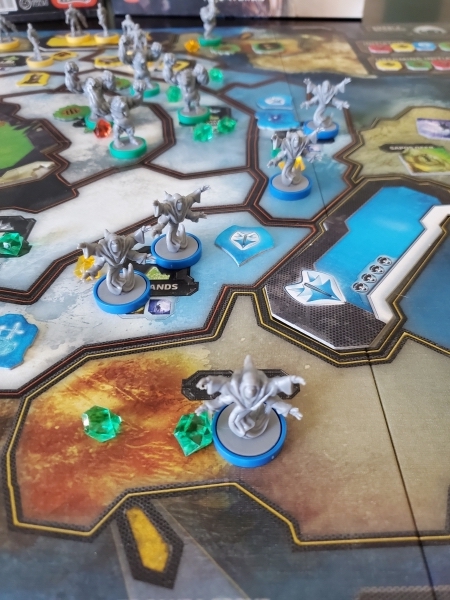
Machines: The stand-ins for Neuroshima Hex's famous Moloch (same color scheme!) are the slow starters in the game since, like the Pilgrims, they're also reliant on their technology (Their default skill, Moving City, requires a structure to be of any use.) and many of their skills are based in a self-sacrifice approach. Software Update lets you draw in the middle of a turn or a battle, but you have to permanently discard a card to do it. Transform lets you swap structures for dudes and vice-versa, which can be huge, but it's also a matter of swapping, not simply gaining. Terrain Advantage and Firepower can seriously impact battles that they're played into, but it's also a question of whether you need to restrict cards in the early game (where they often won't be present, having been played for actions) and/or whether Attrition is the most useful result to play into on the battle board. The Machines often are geared toward that result, so one has to be aware of that before beginning play with them. It also has to be said that, despite coming last in battle resolution, Attrition can have massive impact across the rest of both boards, since it not only scores you points, but forces your opponent to recruit more dudes, so doubling your scoring there isn't a horrible outcome. As noted, their structures are usually the backbone of their approach. With Orbital Snipers and Shred Drones picking off units before fighting ever happens and Factories churning out your dudes wherever they're present (often obviating the need for recruit actions and Jungle cards), your structures are often a threat wherever they are. Bunkers, of course, only operate IN a battle region and can easily swing a losing scenario into your hands (claws?) And don't sleep on Matrix, since the cards stored there can be used anywhere you're fighting (pending terrain limits.) As you might expect, Machines are focused largely on the Mountain deck to obtain as many wrenches as possible. Gaining Priority, which also lets you draw a card, from that deck is also a nice bonus. Machines can take a while to set up, but once they do, the red tide is ominous for your opponents.
Trogs: The natives of this world can be so ferocious you're often wondering why the other three factions bothered to try to do the 4X to them. Trogs have no issues with either mobility or recruitment, since Tunnels are in play at setup and recruitment happens for free every time someone else stumbles over a Trog token. Plus, having 16 dudes to your opponents' 12 means you will frequently have a macro numbers advantage on everyone else. There is the slight disadvantage of beginning the game surrounded by your opponents but, again, with Tunnels already in place, that's not often a serious constraint. Plus, your default skill, Disappear, is often a delayed recruitment tool in itself, since you can drop one dude from your HQ and place a potential two or three somewhere more valuable. Battle Cry and Shadows function similarly, since you'll be able to target "surprise" recruitments where you'd like them to appear. Like Terrain Advantage, Native Forces can be situational but also crucial at the right moment. And you're often relieved of the question of which terrain deck to focus on with Adaptation, since you can simply shift your approach later in the game. In that respect, you can usually ignore Jungle cards, since between tokens and Brooding Pool, putting more dudes on the board isn't an issue. Also, Oceans and Mountains become less of an issue, since one of your structures, Tunnels, is passive and Trap is often too situational to be of real use. In that respect, it's not wrong to simply take advantage of the versatility of Desert cards and keep drawing more cards into your hand every time you take an action. However, don't entirely ignore Oceans, since splitting smaller parts of your horde in different directions is often wise and you, of course, need to be able to move to use Tunnels in the first place. Trogs can be really daunting for the opponents in the first couple games, as befits the "NPC" faction for smaller player counts. But you can often see them coming, as they tend to have fewer tricks than the other factions.
Aftermath
I won't say that the Aftermath expansion is essential, since it's not required to make that rules tweak about playing five rounds, rather than a number determined by VP and Events, and it doesn't add anything earthshattering amongst the extra chrome that it provides. But if you enjoy the base game, it does open up a fair amount of variety in terms of skill and structures, as well as with the new leaders. But when an expansion comes out, there's always some level of discussion/suspicion about the origin of the material. Was it part of the original design that they carved out for complexity or cost issues, like Root's Riverfolk? Was it stuff that hadn't baked in the design oven for long enough? Or was it an answer to the flaw that thousands of playtesters had discovered where dozens could not? An argument that erupted soon after Cry Havoc's release was that Humans were OP and Machines were useless, because the former could drastically shorten the game in the first two rounds with Airfields and Occupation, which gave the slow Machines even less time in which to ramp up. The flat change from a random number of rounds based on VP to a set five rounds in every game would seem to be a pretty obvious answer to that issue. But our experience with the Machines (and Trogs and Pilgrims) in the base game is that they could readily compete with the Humans once people became more familiar with the game. So the idea that many of the new skills and structures in Aftermath were there to buff the "less powerful" factions doesn't seem to hold water. The most likely scenario seems to be that Aftermath was a bunch of new chrome for the game, based on further development after release, and the change to the number of rounds was simply added in afterwards. But none of that alters the fact that there's some interesting stuff in the expansion. Unlike games like Chaos in the Old World, there's no restriction suggested for the expansion stuff, either. You can freely mix both default and regular skills and all the structures with the base game stuff and play whatever combination you want. which is nice. The structures aren't just "in addition to", though, forcing you to choose three from all of those available, which can actually adjust the way factions are played.

Humans: On the one hand, Recon Team normally won't hold a candle to Occupation, as a random Exploration token in your HQ isn't nearly as enticing as free scoring every round. But the rest of the new skills are pretty brilliant, with Medic Team effectively replacing a recruit action, Special Forces being a real threat in a crucial battle, Move It! Move It! making all of those Oceans cards that much better, and Air Drop replacing every recruit action you'd ever want to play for the rest of the game. You'll notice that a majority of them tend to be about getting more dudes in play, which is that slowdown/weakness that Humans often have to address in the midgame. The new structures are about that mobility weakness, with both Armored Shuttle and Choppa giving much more responsiveness to Human forces (including in battle regions with the latter), and U-Napalm giving another way to respond to those bloody Machine fights where the mechanical types simply outlast you. As for the leaders, I tend to favor Col. E. Rose over Gen. Fuchsenbach, as the latter's ability to save one guy at the cost of a VP can be good, but the former's greater drawing power is vastly superior in most situations.

Pilgrims: The new default skill, Data Transfer, kind of reinforces that turtling instinct, in that locking down a couple regions and simply scoring them every round can be a huge boost. Nomads is another version of Data Extraction that doesn't require a battle, which isn't that thrilling, but Recognition Cell can be used to recycle your best cards every round. Crystal Link might be a deterrent to your opponent's favorite structure, but it's very situational. But Direct Extraction may be the best Pilgrim skill in the game, since it not only dumps a potential ton of crystals into your Pool, but also may be a huge speed bump in the potential plans of your opponents, depending on your place in Initiative (which Crystal Link also relies upon.) The structures are also pretty interesting, as Hive Mind gives you access to any Pilgrim skill, even those not currently in the game. Turbo Harvester is also a great late-game move, since you can suddenly make your regions significantly more valuable, while Infusion Reactor not only detracts from your opponent's potential crystal gain, but also doubles your combat prowess in the current fight. This is not the "slow, secure build" approach of the Pilgrims. This stuff makes them pretty gangbusters. The leaders are a bit more subtle, as Mystic replaces the automatic VP gain of a prisoner with the potentially greater gain (and gain to your Pool) of crystals, while Cardinal gives your Pool even greater versatility with each action.

Machines: In contrast to the Humans and Pilgrims, the new skills for the Machines pretty much stay right in theme with what they had before. Nuclear Battery gives you one extra wrench and Data Processing gives you VP for using your structures, both of which are a little underwhelming, but can certainly help the faction catch up when behind. Bombardment means you can always pick one battle and use it like a Shifted Priorities card, meaning you can murder all of the opposition before they can do anything. But Recycling and Additional Processors are potentially amazing, with the former not only recruiting but giving you wrenches at the same time if opponents dare try to kill you and the latter giving you crucial additional actions in the late game at the cost of a dude who may be superfluous at that point. Those two are ideal buffs for those still struggling with the faction. The structure approach is similar in a more oblique fashion, in that it can compel opponents to either have to avoid trying to take prisoners and meet you, uh, gun-to-gun (Autodestruction) or try their hardest not to let you have prisoners, for fear of letting you score at will with Psycho-Chamber. But both of those are somewhat niche scenarios, while Transporter (one of the few two-cost structures in the game) is more generally useful. Just as with the skills, the leaders kind of reinforce what you already do well. My pick would almost always be Omega Brain T-14, since you can activate for free with every Build action, while Omega Brain T-64 just means that you can kill more in Attrition, which you're already usually doing.
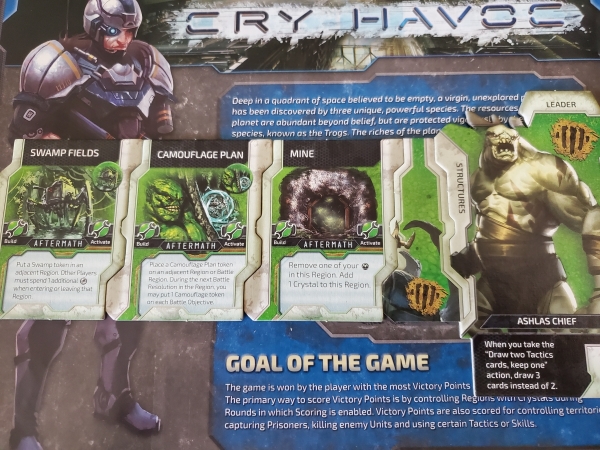
Trogs: The Trog skills also tend to center around their current theme, with surprise and movement being the order of the day. Being able to pick the starting objective in a battle once per round with Distraction is great versatility, while Withdrawal can be a great way to preserve resources in a fight that you know you're going to lose. Ancient Crystals can be a way to threaten a leader, not only with the Trogs but with another faction if you choose to be so generous, which is obviously situational in the extreme. But both Kidnapping and From the Shadows are excellent, since they allow you to force opponents to control their regions with more than just the DoaM usual solo holding unit, as you could not only gain prisoners without ever having to fight, but could also open up their region to simply being walked into and taken, most notably with From the Shadows as part of a regular move action. The threat increase there is significant. The structures are less so. The Mine can be a way to gain a slight scoring bonus if no one has moved into the center regions that you normally dominate, but you still only score half for crystals. Swamp Fields is an almost literal speed bump for your opponents, but may not be worth the action to build it. And Camouflage Plan seems to be right in theme and may have potential... but it was also subject to a printing error that Portal never addressed and, in the end, is more mind game than real change to a battle you're involved in. It's notable that all three of these structures only cost one wrench to build. The leaders are similarly mild, with Ashlas Chief at least increasing the cards you get to look at, while The Auntie's card draw ability may or may not be better than just letting a Trog War Party happen like usual.
The new Events in Aftermath are nice, but the Neutral structures are almost never worth the actions it takes to build them. With only five rounds in the game, perhaps only the Machines are ever going to really be able to exploit them and, with an already slow start ahead of them, spending four wrenches on one structure is often simply not worth it. So, overall, there are some nice things for each faction (certainly some more than others; looking at you, Pilgrims (/John Wayne)), but Aftermath is definitely an optional expansion to an already brilliant game, which many think should be what all expansions are. Certainly, it doesn't change the way the base game already operates, which lifts it above many examples of the DoaM genre and which deserves far more exposure than it initially received.
 Games
Games How to resolve AdBlock issue?
How to resolve AdBlock issue? 